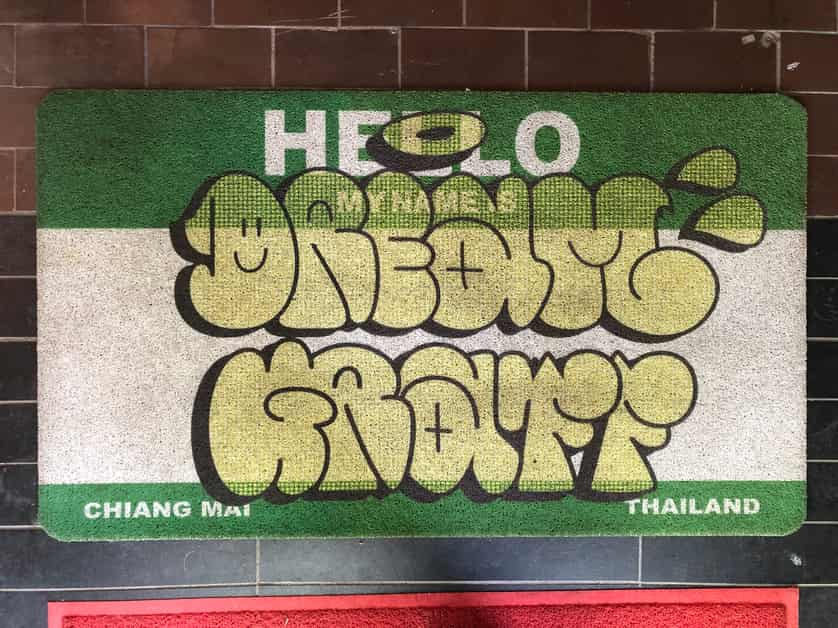
It’s not hard to miss what seems to be on the walls of every empty lot or abandoned building side in Chiang Mai: street art. The city is full of large and small scale pieces, familiar and one-off tagging, and a dozen or so stickers on the back of every street sign. No matter the size, shape, or form, street art can be done anywhere by anyone. You don’t need an invitation to be or become a street artist, yet you still have the power to affect the minds of a wide public audience. This is why I have always loved street art: it’s accessible, and often times carries political undertones that are expressed in symbolic and playful ways.
After Googling around about the Chiang Mai street art scene, I came across an interesting gallery in the southeastern part of the city that seemed to have street art… indoors? I wondered how the essence of street art could be maintained in what appeared to be a large museum. It also looked like there was a hostel, mini skate park, and cafe (which is now closed). I was confused but still curious about this so-called “Dream Space Gallery.”
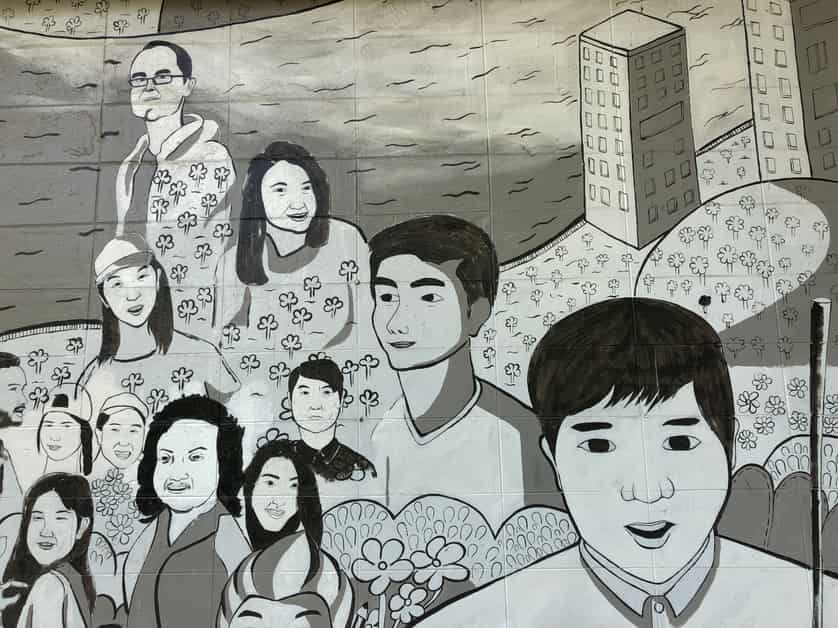
Formerly a garment factory in Chiang Mai’s factory district, the owner of what is now Dream Space was approached by local artists interested in converting the building into a creative community hub. Although there is no remaining machinery or semblance of a garment factory, the three large warehouses left behind lend themselves perfectly to street art. While some of the building space is reserved for artists to work, the previous factory walls are now covered with larger than life street art by local and internationally renowned Thai artists, such as Muebon and Alex Face.

Walking through Dream Space is unlike any other viewing of street art. Instead of seeing works in an abandoned lot or while buzzing by in a songthaew, you can immerse yourself in a mini-city of street art. In the same way you can get lost or turn a corner and stumble upon street art during a city stroll, you never know what to expect while exploring Dream Space’s large compound.
In fact, it was hard to tell whether or not the gallery was open. There were few people around (presumably artists) and none of the typical formalities one might associate with a museum: no admissions fee, no security guards, and no plaques “describing” what you’re seeing. You can spend as little or as much time as you’d like viewing each mural, and the general emptiness of the gallery encourages curiosity. Going through Dream Space was a leisurely experience, and I found myself enjoying this newfound kind of museum outing.
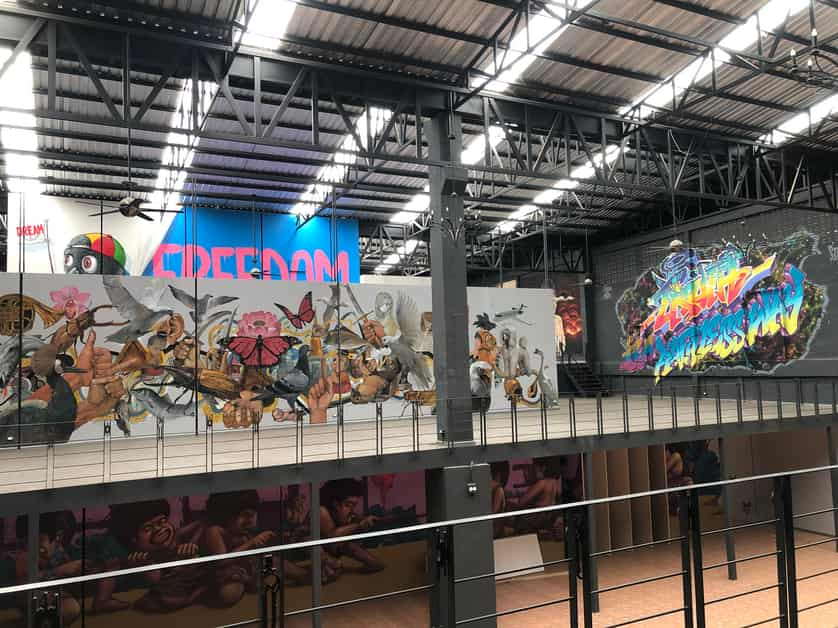
After my initial visit, I returned to chat with one of Dream Space’s artists, Sanchai (Chai), a former fine art painting student at Chiang Mai Rajabhat. When I asked Chai about having street art inside, it didn’t seem like a big deal to him. Although the largest and main gallery pieces will be there for the foreseeable future, Chai seemed more focused on the fact that artists not only have an opportunity to hone in on their craft, but also share their work and messaging with the public.
The themes of the work at Dream Space are also true to the spirit of graffiti and street art: anti-establishment, anti-capitalism, and in Chai’s own words, “striving for a better life.” Chai altered the themes of his own work after a friend shared how his child commented on the street art he was regularly seeing. This experience prompted Chai to think about how influential street can be and the subsequent responsibility it has in informing young minds.
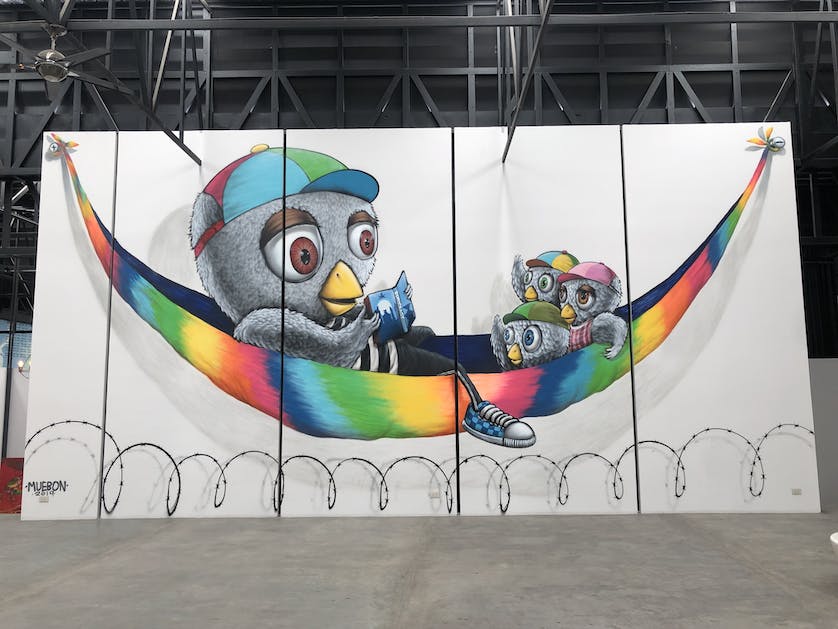
When I asked Chai how artists at Dream Space make money, he said it’s definitely hard. Chai himself is also a musician and sells some of his work, but most of the artists at Dream Space have other jobs or find additional ways to make money. Even to use Dream Space’s facilities, artists are required to chip in with work. In that way, one might say Dream Space is similar to a collective, although Chai shies away from using labels to describe exactly what Dream Space is. While it appeared that Chai was an informal manager, when I asked about his position at the gallery, he emphasised that everyone shares the power at Dream Space.
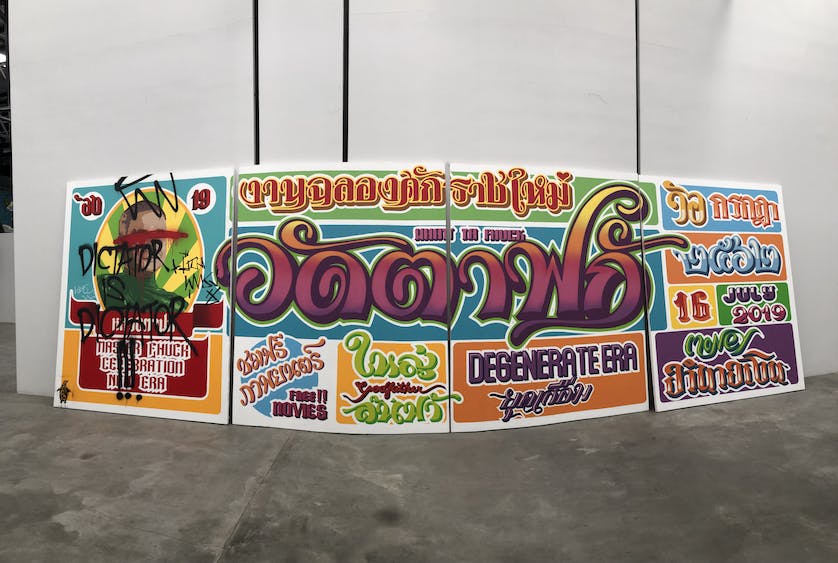
It’s clear that collaboration and education are at the heart of Dream Space’s mission. Even when Dream Space’s owner is approached by outsiders seeking to rent the gallery for events and parties, he always politely declines. Dream Space also has a developing workshop area that will eventually be open to the public for classes ranging from stencil making to the history of street art. The workshop already has some pieces on its walls (including one by a visiting French artist), but going forward the workshop will serve as a studio for visitors to practise their craft.

Last year, Citylife wrote about the obstacles that Chiang Mai University art students face in expressing themselves. Chai references the same students, and similiar art students throughout Chiang Mai. He shared that Dream Space reserves one of its first floor galleries for students to showcase their art — something that other folks in the city aren’t stepping up to do.
Dream Space also houses a small gallery where curated exhibits showcase local artists, such as Light Eco Oxygen (better known as Leo), who was recently showing until April 3. Small merchandise such as spray paint cans and stickers are also available for purchase at the gallery entrance’s foyer.
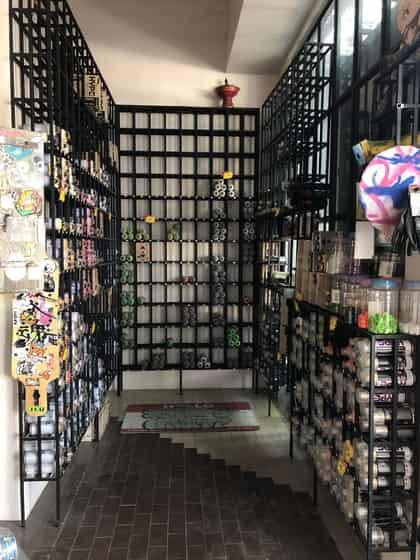
It’s not hard for anyone, street art enthusiast or not, to appreciate what’s going on at Dream Space. If street art were to ever successfully exist in an indoor, semi-curated space, Dream Space Gallery has seamlessly made that experience possible. The gallery is a welcoming and promising community education centre, and Chai and the other Dream Space artists there are excited to engage more with the public going forward. Chai wasn’t sure if Dream Space is the first gallery of its kind, but I’d venture to say there are very few, if any, similar places in the world.
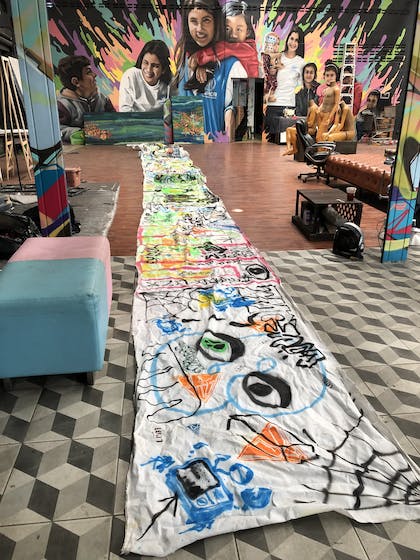
Learn more about Dream Space below:
Erin Hanley
